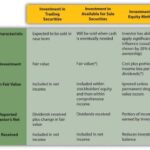Accrued revenue is quite common in the services industries, since billings may be delayed for several months, until the end of a project or on designated milestone billing dates. Accrued revenue is much less common in manufacturing businesses, since invoices are usually issued as soon as products are shipped. Accrual accounting requires recording expenses in the same accounting period as related revenue, based on the GAAP matching principle. The reverse of accrued revenue (known as deferred revenue) can also arise, where customers pay in advance, but the seller has not yet provided services or shipped goods. In this case, the seller initially records the received payment as a liability and later converts the entry into a sale when the transaction is completed. Salaries payable refers to the wages that are owed to the employees for the work they have completed in a specific period, but it isn’t paid out until another period.
Accrued revenue is recognized as earned revenue in the receivables balance sheet, despite the business not receiving payment yet. It is revenue for which the company has collected cash but not performed the service. If a company has a lot of deferred revenue, it may not be able to complete each of the jobs that it has collected for. Accrued revenue in the balance sheet is one side of the double-entry bookkeeping journal entry. The other side of the balancing entry is the revenue account (or accounts) flowing to the income statement.
Is “accrued” a revenue or an expense?
Whereas accrued revenue is recognized before you receive the cash, deferred revenue is recognized after you receive the payment. Accrued revenue is earnings from providing a product or service, where payment has yet to be issued https://kelleysbookkeeping.com/t2-corporation-income-tax-return/ to the provider. Due to this, accrued revenue is recorded as a receivable owed by the customer for the business transaction. Accrued revenue is the money earned in one accounting period and recorded as the transaction occurs.

The credit for sales and services is to a revenue account in the general ledger chart of accounts. In the case of interest income, the credit is to interest income account in the Accrued Revenues general ledger chart of accounts. Fortunately, such circumstances have been accounted for under the Generally Accepted Accounting Principles(GAAP) as part of accrual accounting.
Our Services
However, the business expects the actual cash payment in the following period. The concept of accrued revenue is needed to properly match revenues with expenses. The absence of accrued revenue would tend to show excessively low initial revenue levels and low profits for a business, which does not properly indicate the true value of the organization. Also, not using accrued revenue tends to result in much lumpier revenue and profit recognition, since revenues would only be recorded at the longer intervals when invoices are issued.

The standard procedure for customer invoice recording will record accounts receivable and sales revenue through a journal entry for accounts receivable subsidiary ledger activity. For example, a SaaS company may acquire a customer who needs a service for the next six months. Under the contract terms, the business may agree to deliver the service at the price of $1,000 and send an invoice at the end of the month, which is payable on the 15th of the next month. From that point until the end of the contract, the SaaS company will have $1000 in accrued revenue from that particular customer. Accrued revenue covers items that would not otherwise appear in the general ledger at the end of the period. When one company records accrued revenues, the other company will record the transaction as an accrued expense, which is a liability on the balance sheet.

